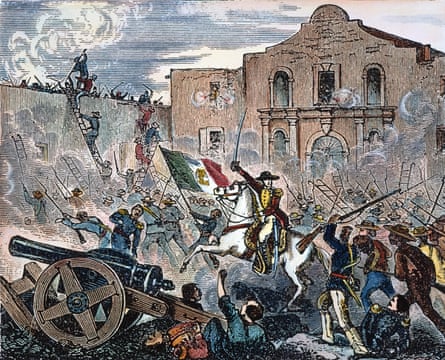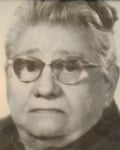My maternal grandmother was a head nurse in a hospital in the northern state of Chihuahua during the Mexican Revolution – an epic event that affected both sides of the border and caused my family to permanently move to the United States to escape the violence.
Grandmother worked at the hospital, family lore goes, when the infamous general Pancho Villa seized the facility and left his wounded troops to the hospital’s care. Mama, as we called her, took it upon herself to watch out for the female nurses amid all the soldiers, some of whom made unwanted sexual advances to them. She reported them to Villa’s officers. That’s when Villa showed up and asked Mama to point out the offending soldiers. When she did, he drew his pistol and summarily executed the men, astonishing the witnesses and delivering the message to his army that this behavior would not be tolerated.
I’ll never know the truth of this incident, but hearing this tale as a child ignited my imagination, and I devoured everything I could read about Pancho Villa. Yes, there was a debate over whether he was a hero or villain. Yes, he executed people unmercifully. Yes, he ordered his troops to rape women in a town he captured. And, yes, his army was only the second foreign army to invade the United States since the British in the war of 1812. The invasion of Columbus, New Mexico, notwithstanding, he had been an ally of the US and a Hollywood favorite because he allowed movie crews to film his battles and even shoot retakes.
At the height of his influence, Villa was a brilliant wartime tactician, one of the first to use trains as mobile army surgical hospitals. Although he used my home town of El Paso, Texas, as an important trading post for smuggling arms and other contraband to his revolutionary Division of the North army, I never learned a thing about him in school. What I learned was prompted by Mama’s stories.
She was born in Arizona, but her life was spent on both sides of the border, like so many people for generations. Their stories of the revolution often only live on in family lore, not in school history books. Like thousands of other refugees from Mexico, Mama came to the US to escape an agonizing, decade-long revolution in which the state of Chihuahua and the city of Juárez, across from El Paso, were strategic focal points of the war and the sites of several pitched battles. Yet the only reference to Villa was when we learned about General John “Black Jack” Pershing, who commanded Fort Bliss, located in El Paso, and unsuccessfully invaded Mexico in an effort to capture Villa after the Mexican general entered New Mexico.
After Mama made her permanent home in El Paso, she applied her midwife skills in Hispanic neighborhoods along Alameda Street, on the south side of town near the border. Many of the babies she helped deliver came from families that were also refugees from years of fighting in Mexico. As a child, I would engage in debates with Hispanic schoolmates over whether Villa was a hero or a villain. Years later, I figured out that those who idolized Villa came from the peasant class in Mexico and those who declared him a bandit had upper-class relatives before the revolution.
I think of the stories of Villa, and the people whose lives have always straddled the border, as Texas and other states pass laws that ban and misrepresent critical race theory and decide what version of history children should be taught in our public schools. In September, a new law passed by the Texas legislature goes into effect that mandates how race is taught in public schools and essentially forbids discussion of current events unless all perspectives are represented, which would give equal weight to ideas that should long ago have been dismissed. A second pass at the legislation would allow teaching about the historical relationship between Texas and Mexico but replace specifics in the earlier version, such as learning Martin Luther King Jr’s “I Have a Dream” speech or the history of the Chicano movement, with more general contributions of African Americans and Hispanics to state history.

Last month, Governor Greg Abbott signed into law the 1836 Project, a patriotic education initiative marking the year Texas won independence from Mexico. This version of Texas history will be shared in pamphlets at driver’s license offices and on an agency website. In a video chronicling his signing of the law, Abbott is surrounded by three white lawmakers and one Black lawmaker. There are no Hispanics, though they are projected to be the majority population in Texas by 2025.
Those lawmakers advocating for a whitewashed, anglicized version of history are creating their own bit of history. These historical segregationists have taken their cue from former president Donald Trump’s 1776 Commission, which was quickly disbanded by President Joe Biden. In proposing the commission last year, Trump said: “We want our sons and daughters to know they are the citizens of the most exceptional nation in the history of the world.”

I’m proud to be a citizen of the United States. But reflecting on the formal history that I have been taught in Texas public schools, I wonder how proud the US is to have me or my people.
In seventh-grade history, I was taught to demonize Mexicans, epitomized by General Antonio López de Santa Anna, who won the Battle of the Alamo, but lost the war and Texas to Sam Houston weeks later in the Battle of San Jacinto. (In the lost opportunity category, teachers could have made history more interesting by noting that, while in exile later in life, Santa Anna introduced Americans to chicle, the substance used to make chewing gum.) A version of that history is still required in Texas public schools.
I learned that the Texas Rangers conquered lawlessness in Texas, but was not told of their history of indiscriminately killing Hispanics along the border, often as a warning to other Hispanics. A version of that history also endures to this day.
I never heard about Dr Hector Garcia, Cesar Chavez, Dolores Huerta, Rodolfo “Corky” Gonzales, Reies Lopez Tijerina or other Chicano civil rights leaders, even though El Paso was on the frontlines of the Chicano movement. And I only learned about Pancho Villa through the lens of a US general.
Mama and my parents passed on a more inclusive version of Texas history to their children. We should at least expect the same from our state and national government.
Carlos Sanchez is director of public affairs for Hidalgo county, Texas. He was a journalist for 37 years and has worked at the Washington Post and Texas Monthly magazine, as well as eight other newsrooms. He can be reached at borderscribe@gmail.com
